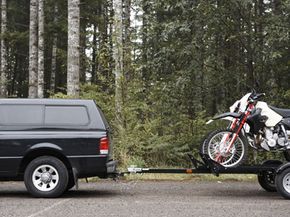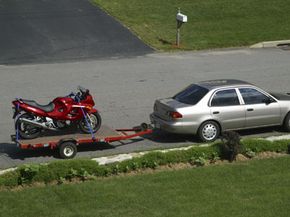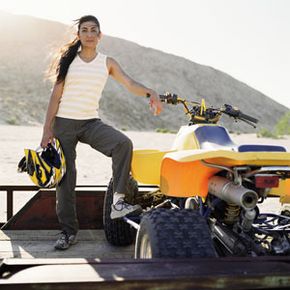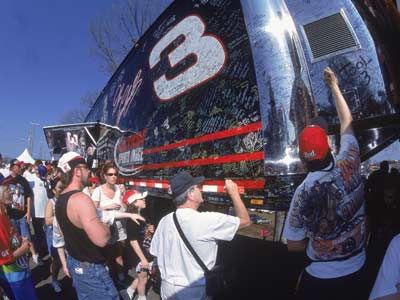If you've ever towed a car or a boat with another vehicle, forget everything you think you know about towing. When it comes to towing motorcycles, experts agree that it's in a class by itself due to unique technique and safety concerns. Certainly, there are considerations that should be taken into account across the board. You'll want to know what you're doing by practicing driving with a vehicle in tow in a safe, open location before you hit the road. You'll need to know how to load your motorcycle or all-terrain vehicle (ATV) onto your trailer to ensure the weight is properly distributed (the rule of thumb is 60 percent of the weight in front of the trailer's axle and 40 percent behind it). And you'll want to follow rules and procedures that dictate driving behavior in any towing situation, like making wide right turns to protect against clipping objects and other vehicles with your trailer.
Motorcycles present several towing challenges. Tipping, for example, can be a problem since motorcycles stand on two wheels instead of four. Properly securing the motorcycle so that it doesn't shift during transport can also be more challenging than towing a car or ATV on a trailer. Most cars come equipped with factory-installed slots made to secure cargo during transport. Motorcycles and ATVs, on the other hand, may not have this additional feature. Instead, motorcycles and ATVs must be lashed across their saddles and through their handlebars. This procedure can vary by bike or ATV, and should be practiced before towing.
Advertisement
You should also investigate more general concerns before you tow your motorcycle or ATV, including issues like state laws concerning towing and getting the proper insurance for you tow set up. In this article, we'll look at both of these issues to help you understand what you need to know before you head out on the open road with your motorcycle or ATV in tow. On the next page, we'll look at towing laws by state.
Advertisement





